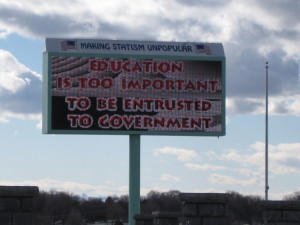When you look at the words “Education is Too Important to Be Entrusted to Government,” what do they mean to you? Do you see the statement as right or wrong, true or false, or somewhere in between?
Words are meant, among other things, to make a statement, persuade or to sell an idea. So with the re-writing of No Child Left Behind (NCLB) being debated in the Senate Education Committee, now would be a good time for the country to discuss entrusting government to run the institution of public education.
With the damage inflicted upon schools through NCLB, money wasted on Race to the Top grants, and the chaos created through NCLB waivers, the government owes its people an explanation as to what was learned and give us reason as to why we should trust them to move forward.
The reality today is that testing every child, in every school, every year has left us financially unable to address the dire needs of every child. This situation was created by government as directed by the education industry.
State government took on the responsibility to provide public education. The quest for quality used to be an American principle we could rely upon. When equal access for the poor and minorities was seen as another principle of our republic, the federal government became the engine for equality.
When the United States of America was entrusted to be a country of the people, by the people, and for the people, we could trust government because we could trust ourselves through representation of our ideals.
The trust has not really been lost; it has been sold. Let us hope there is a reclaiming process in the very near future. Our children are depending on it.

